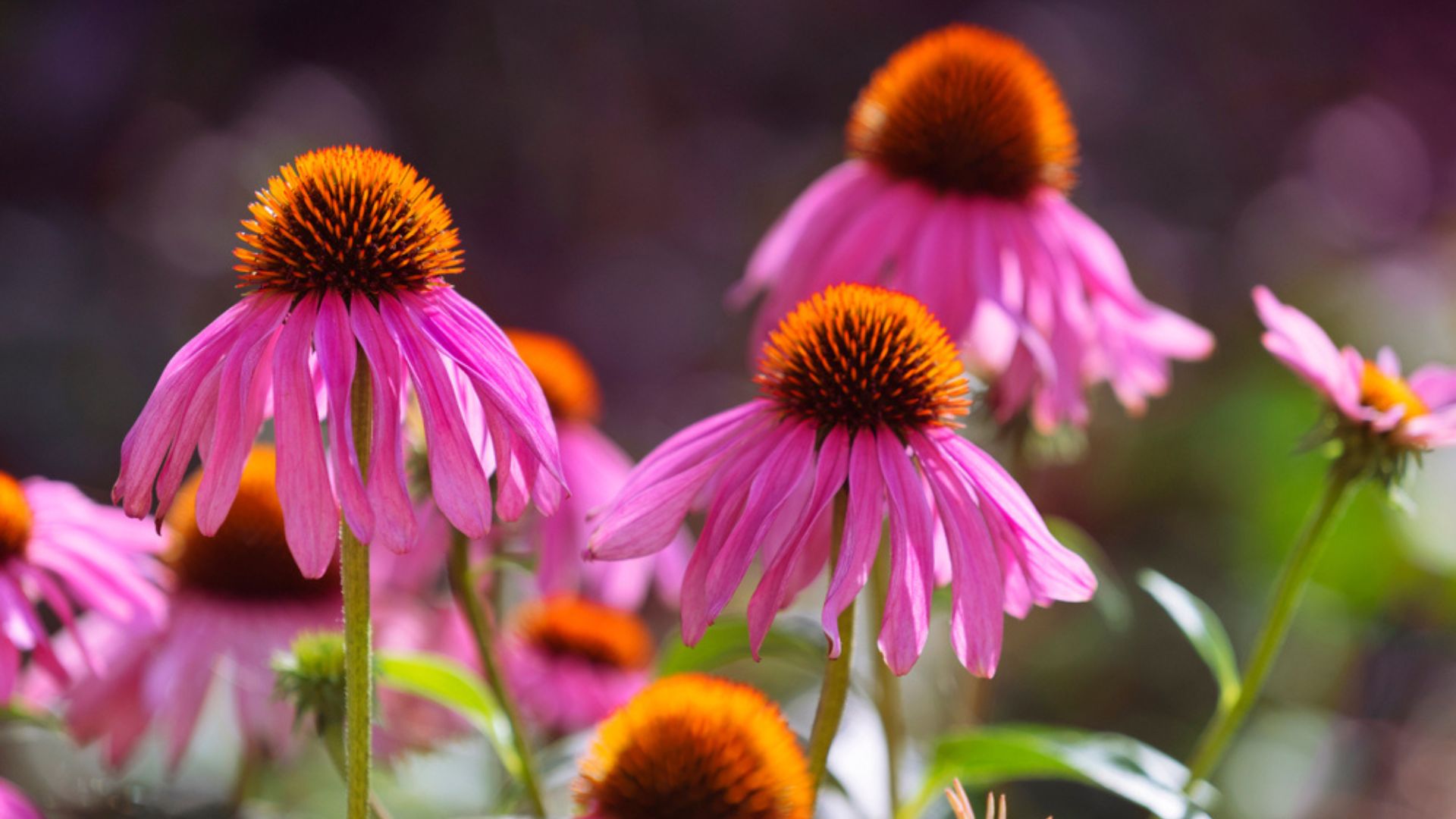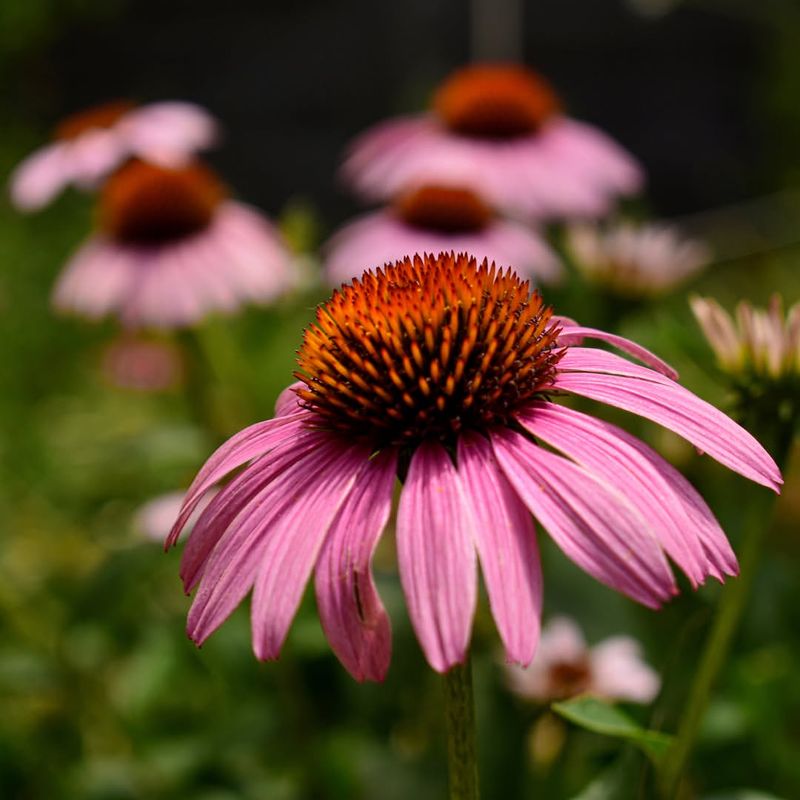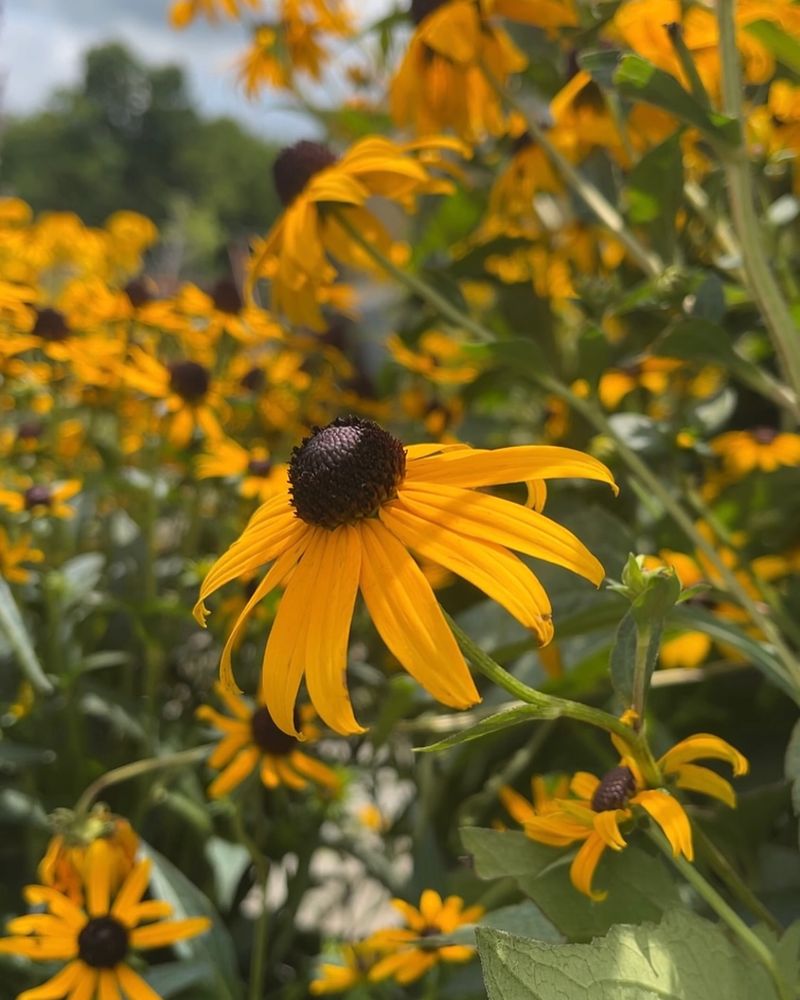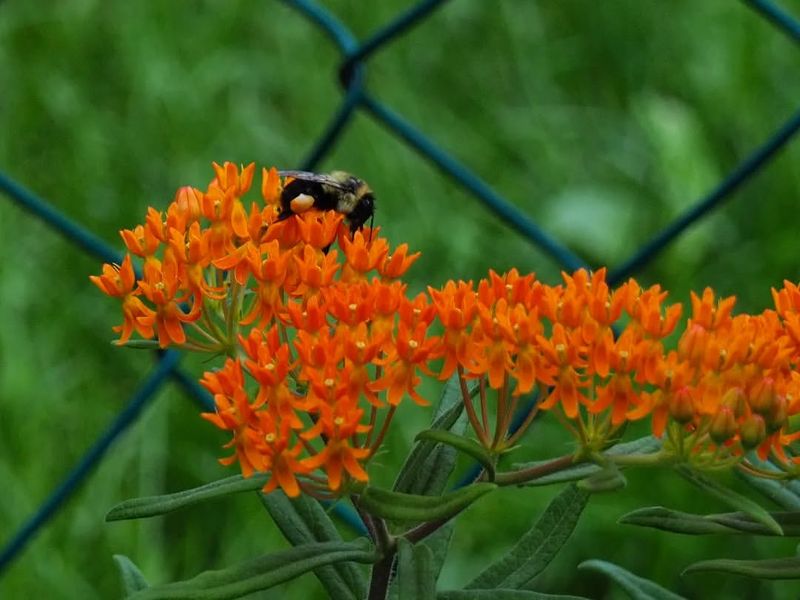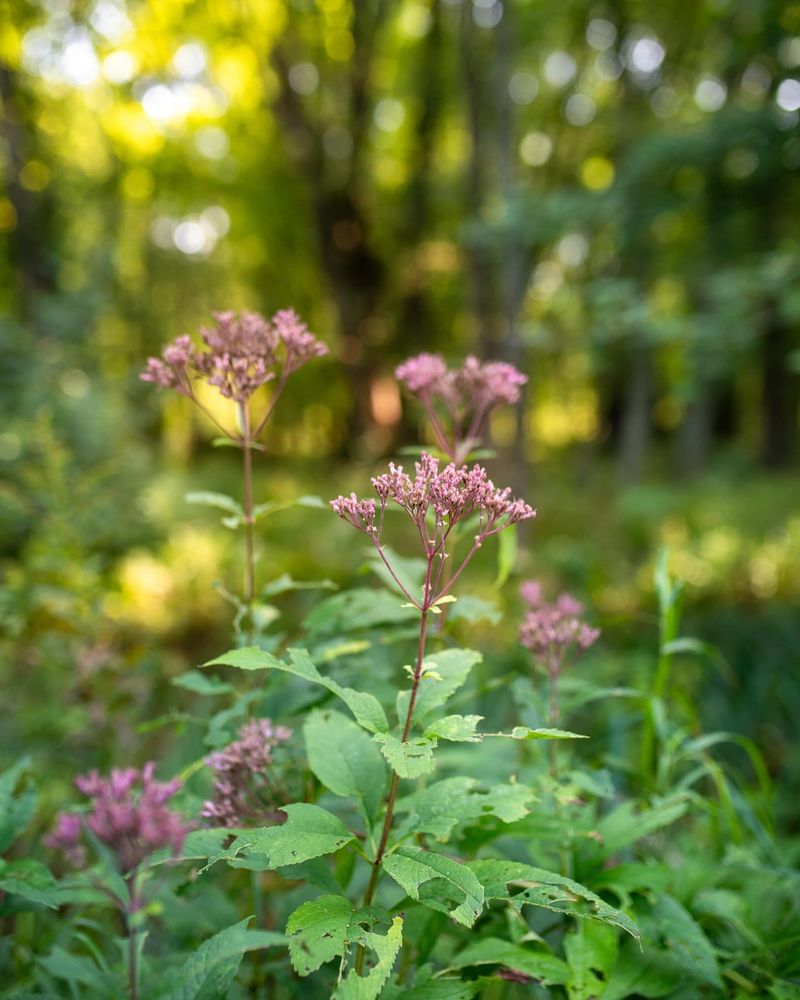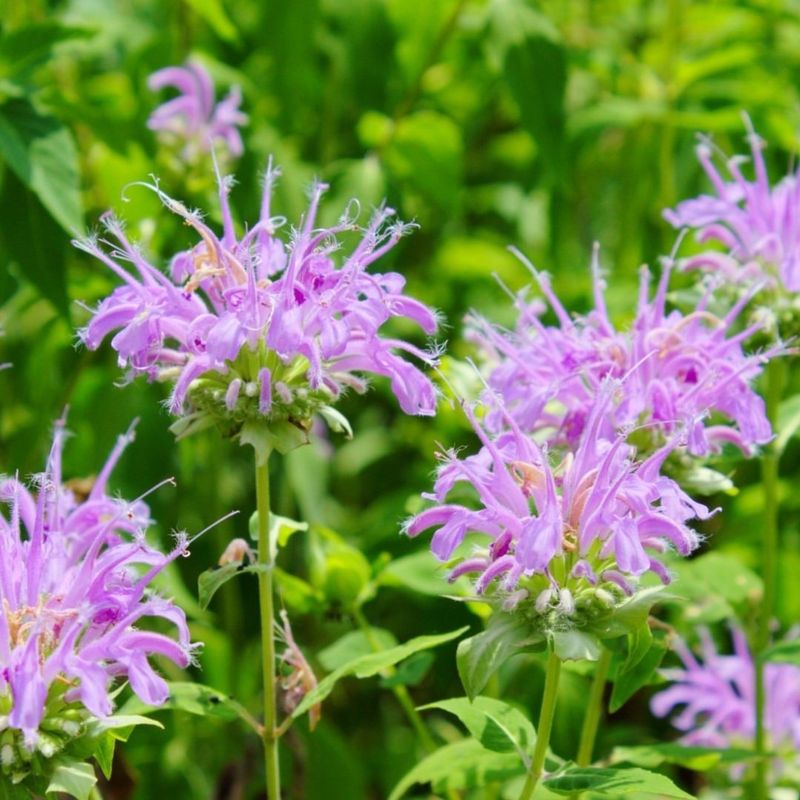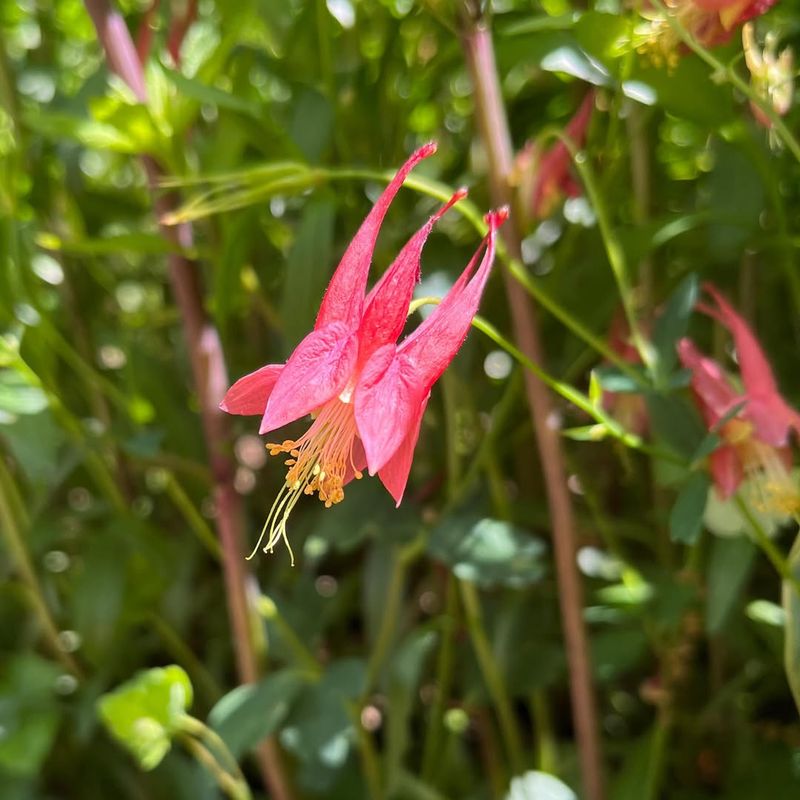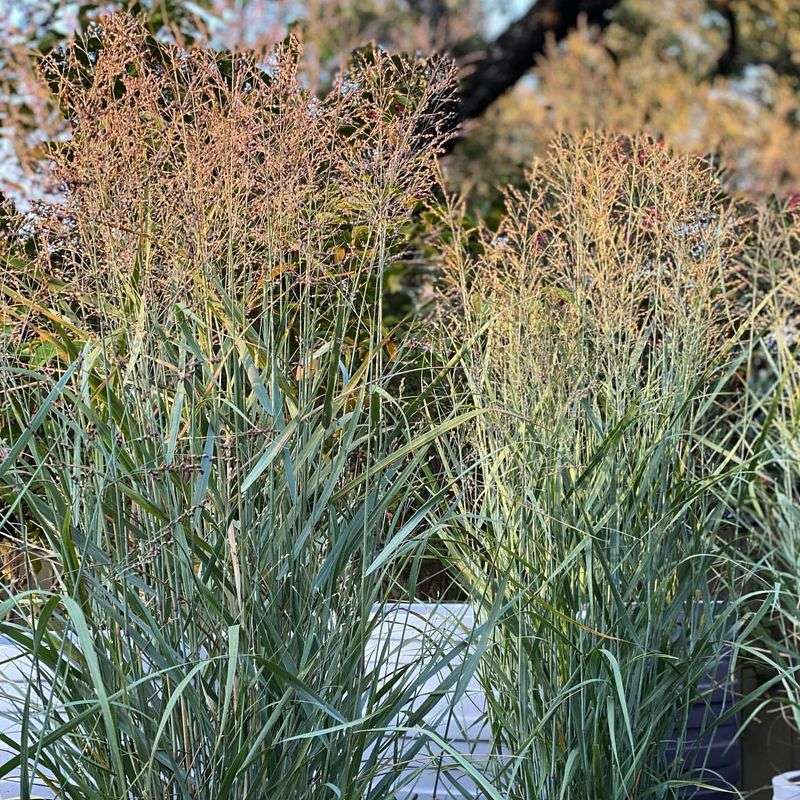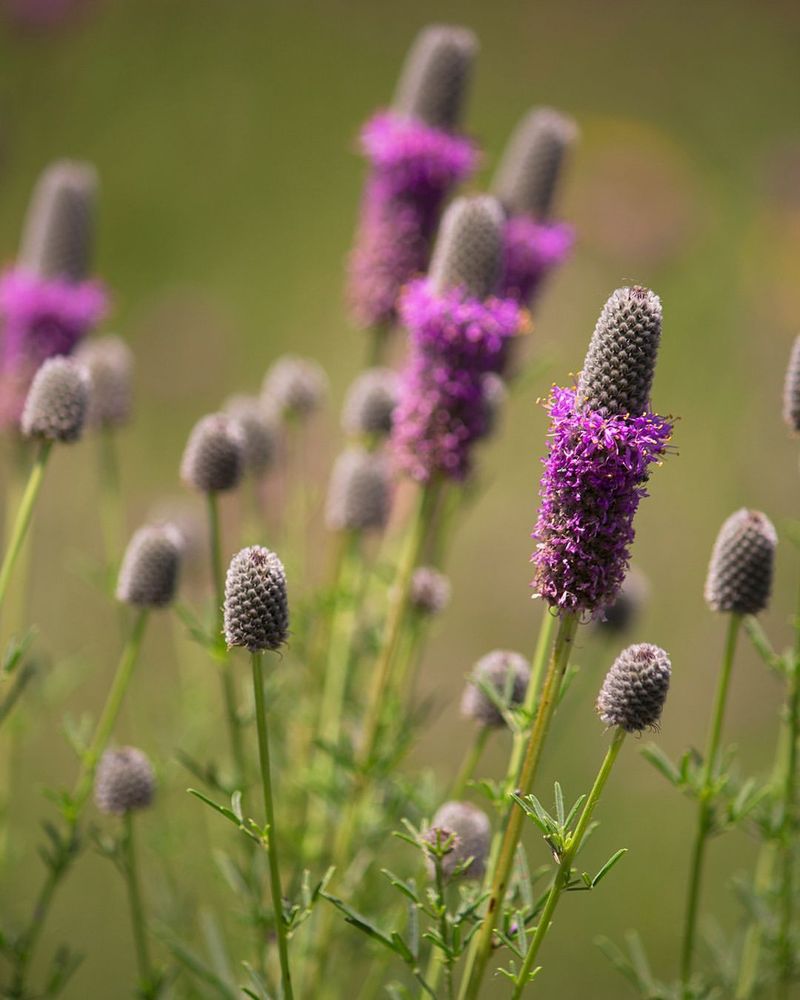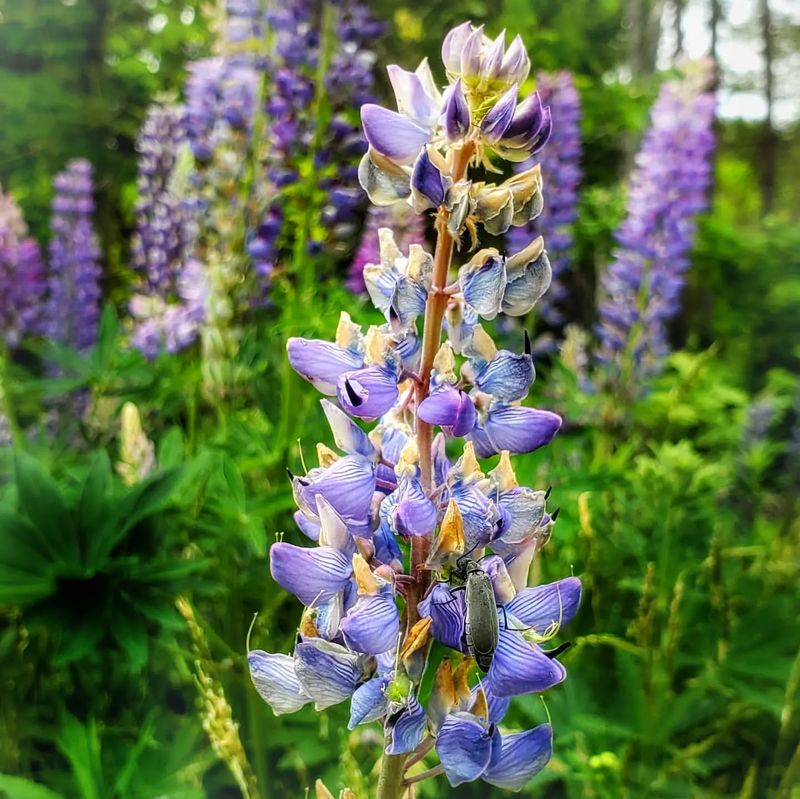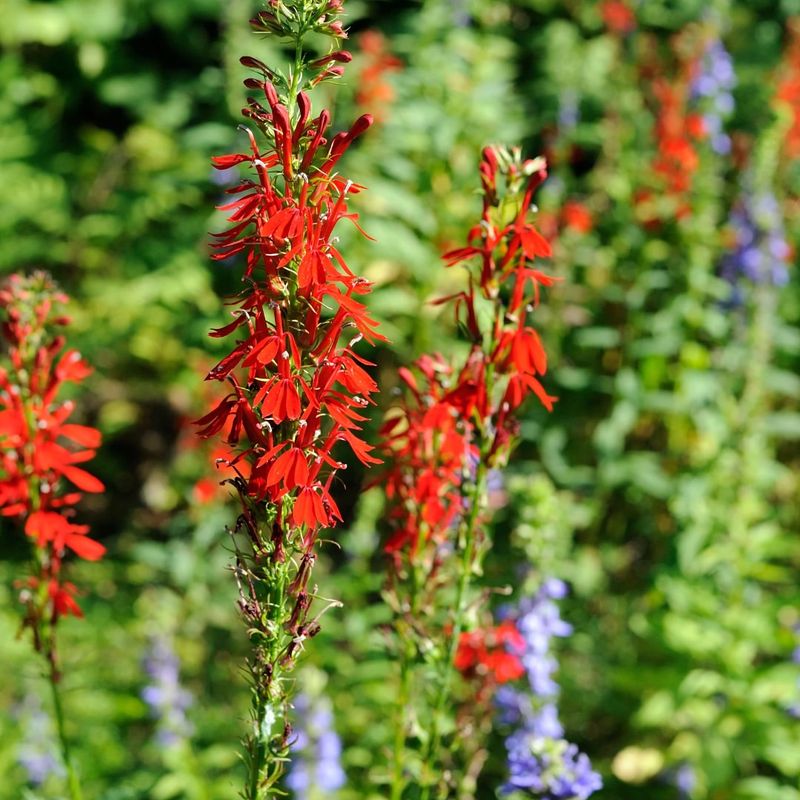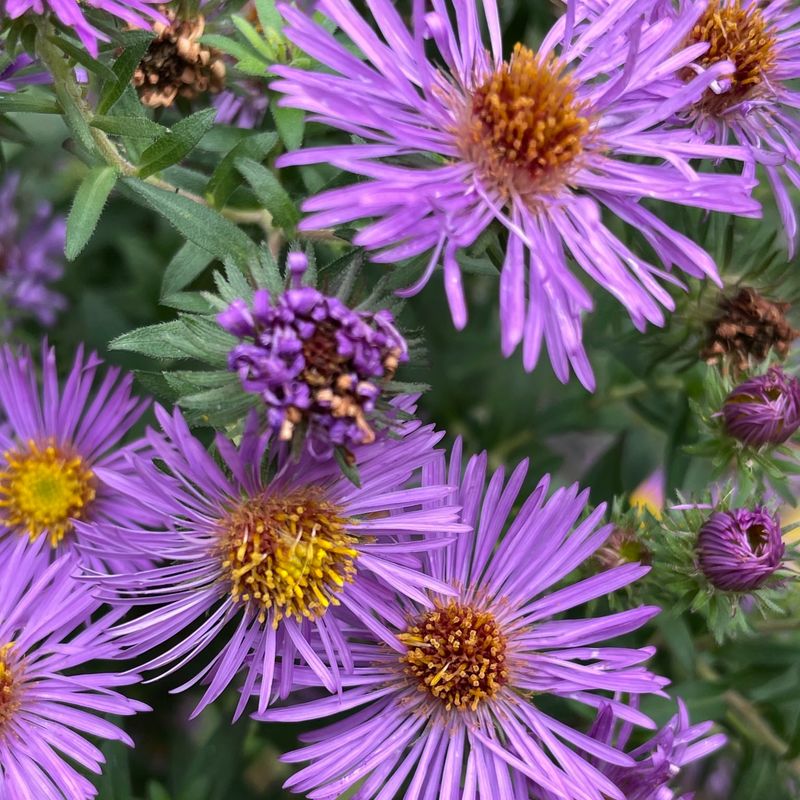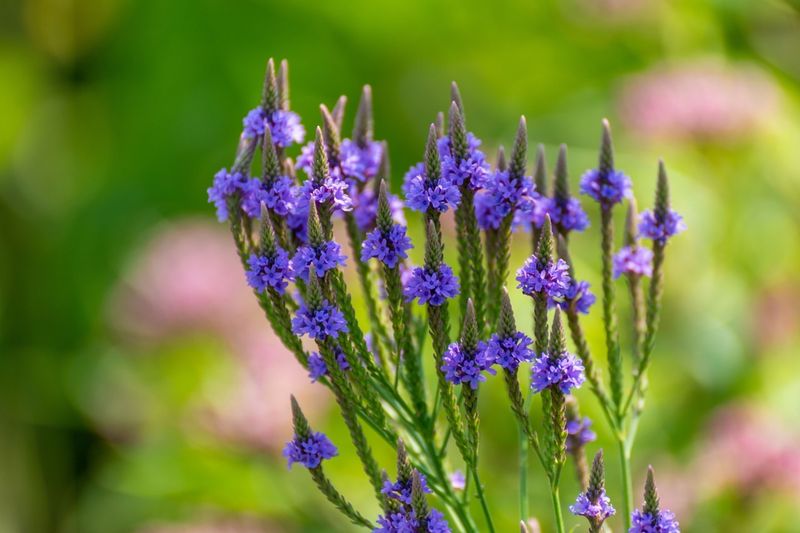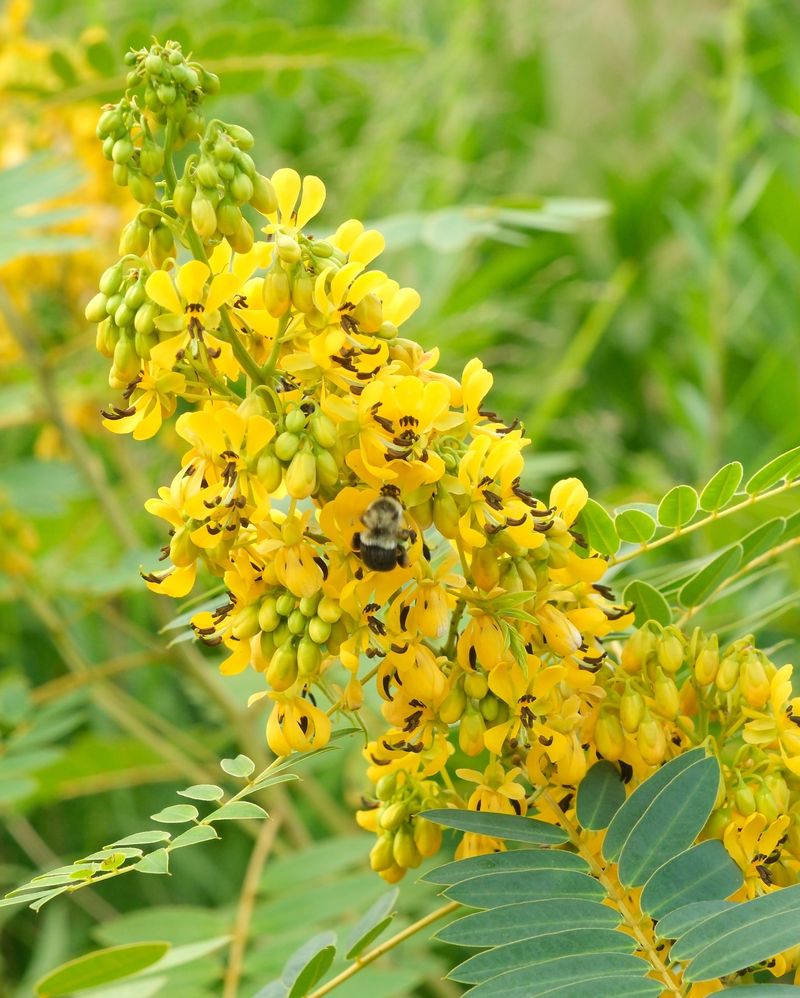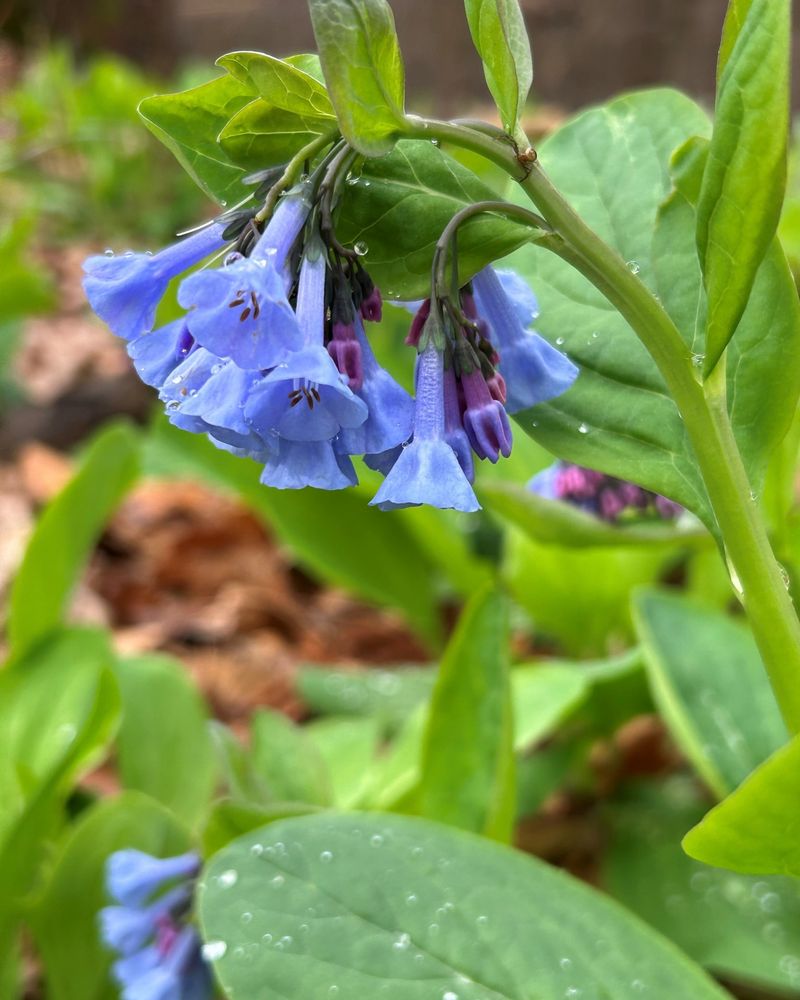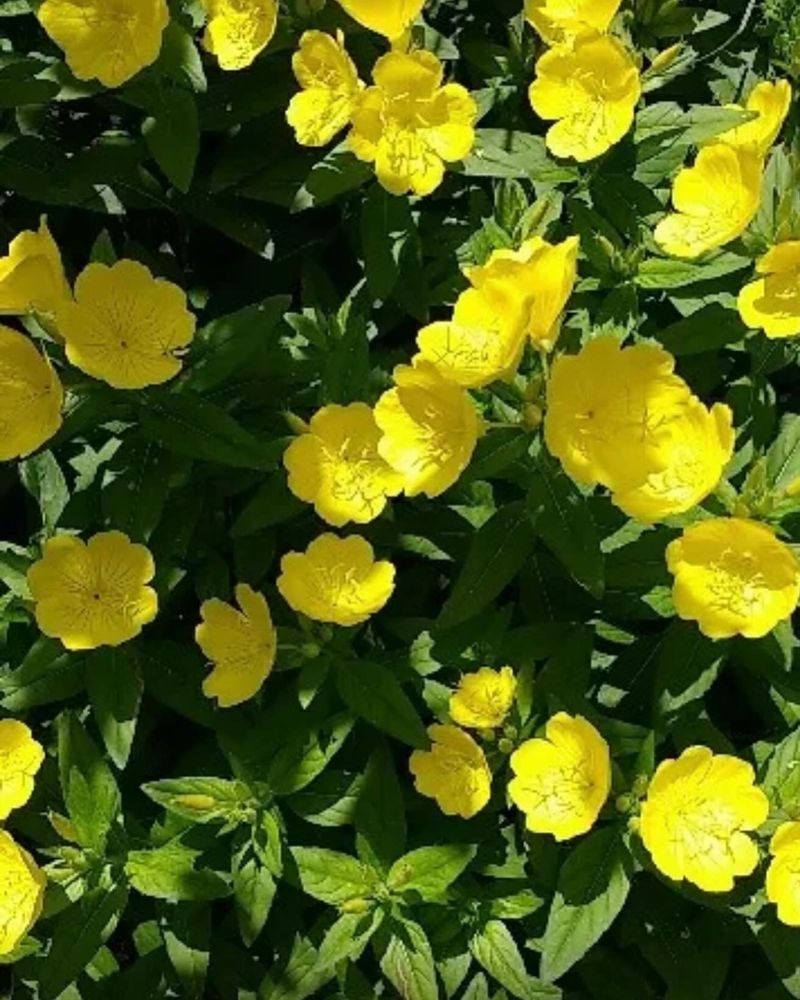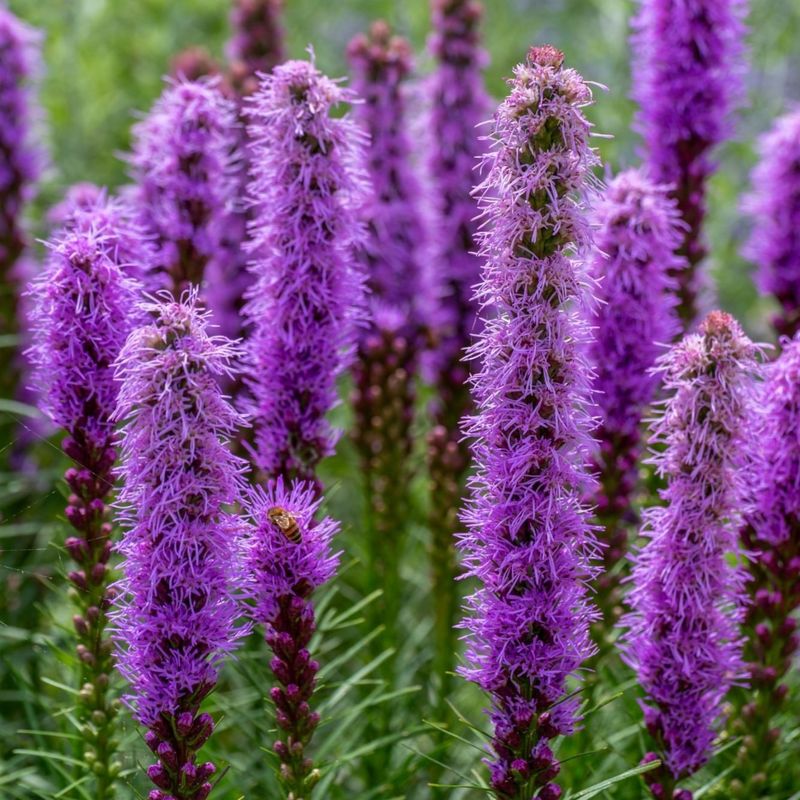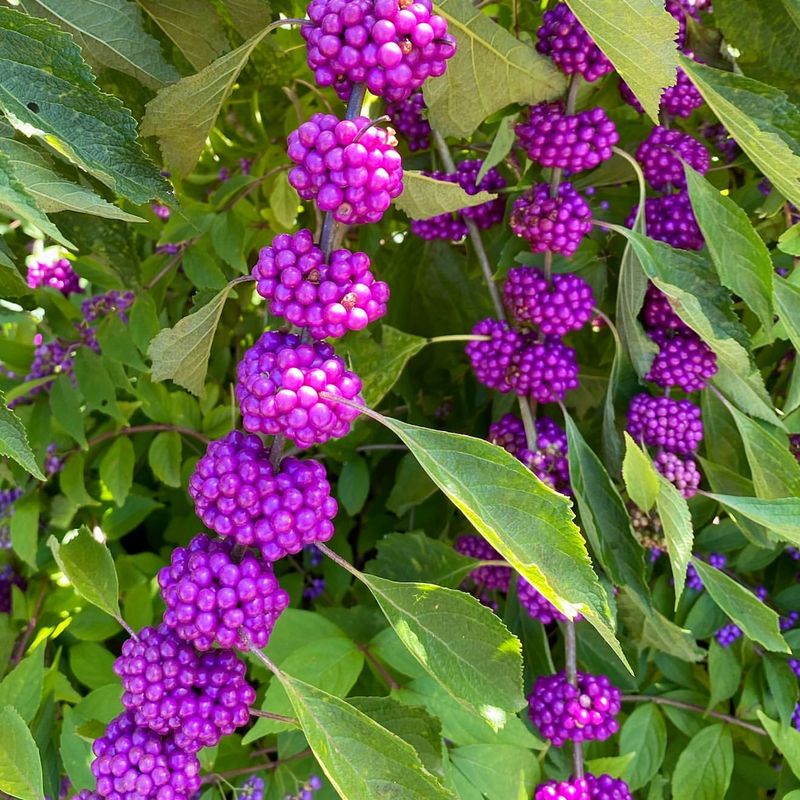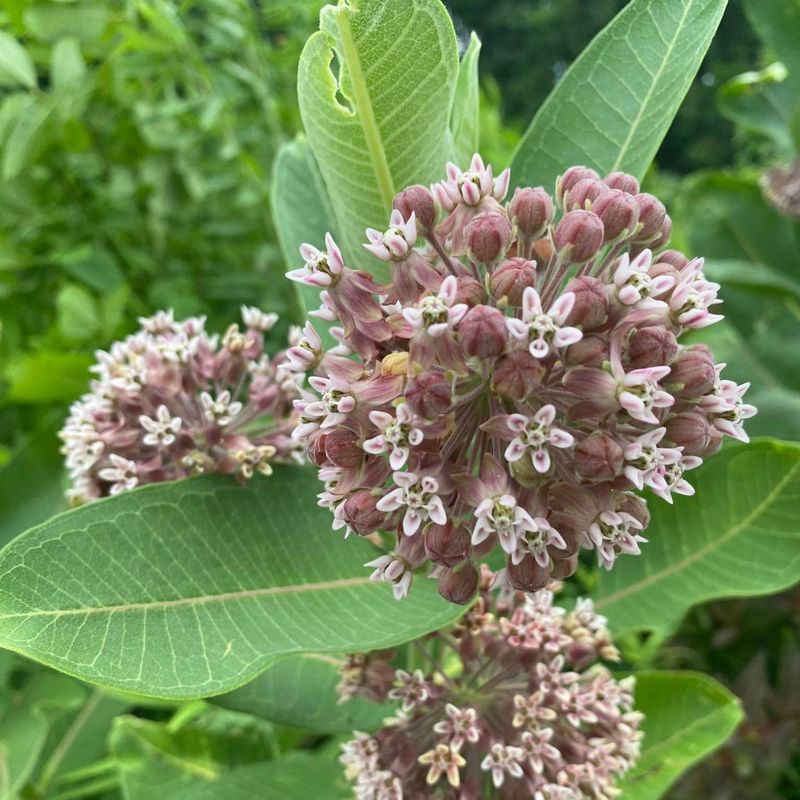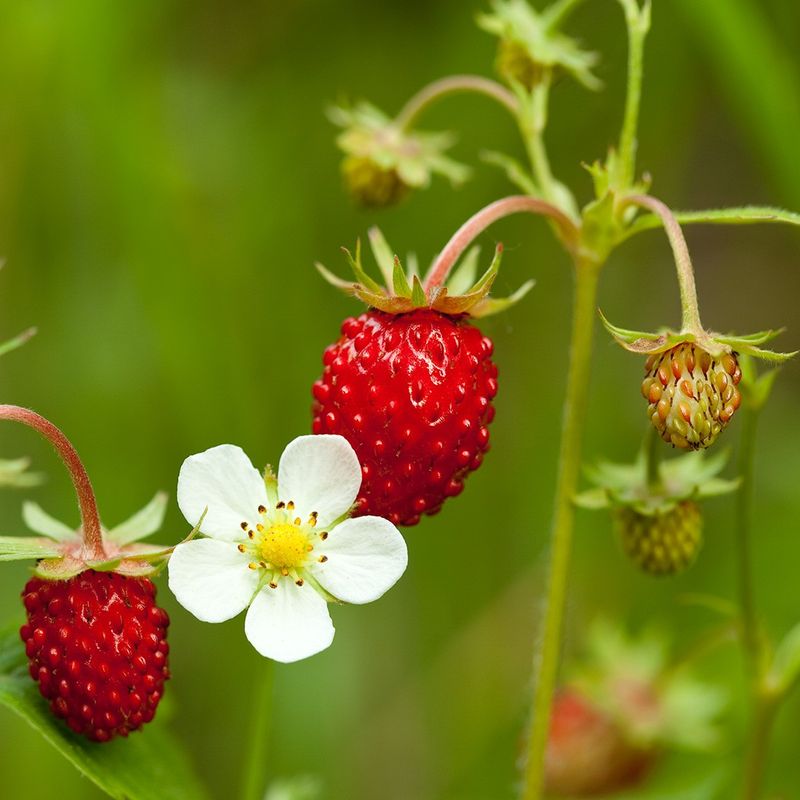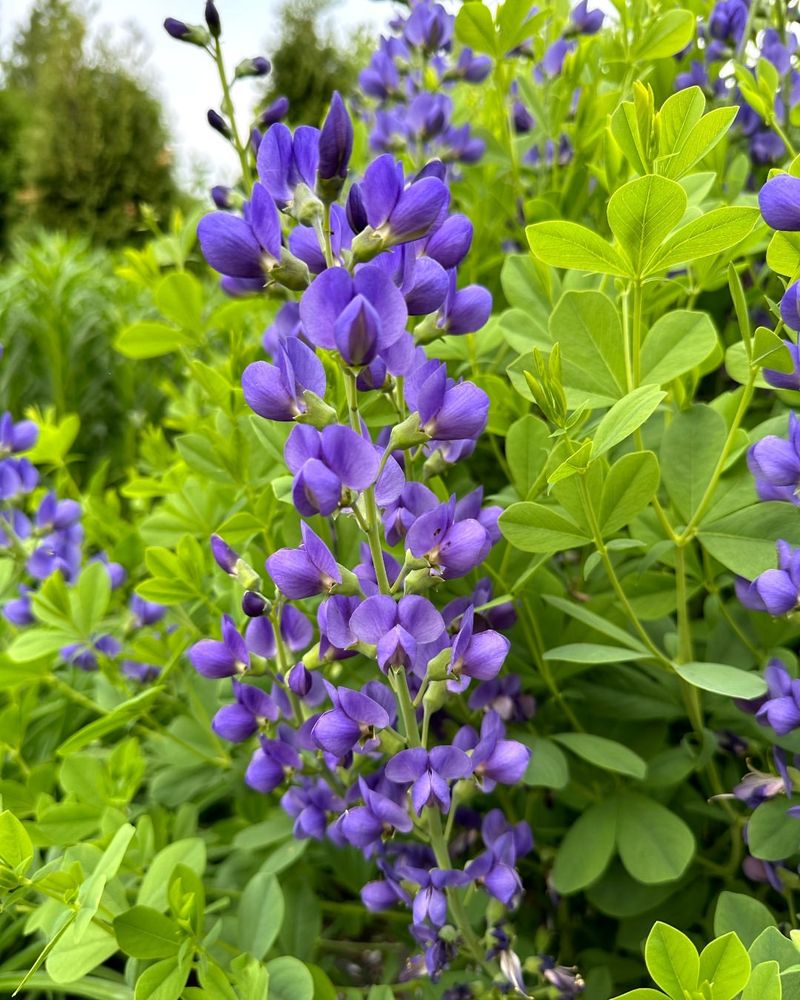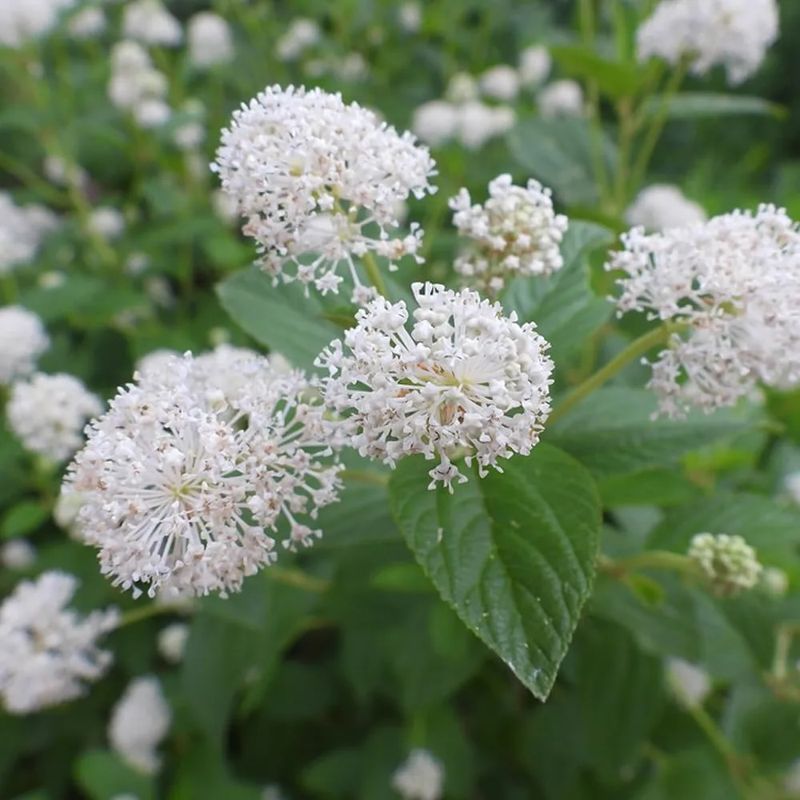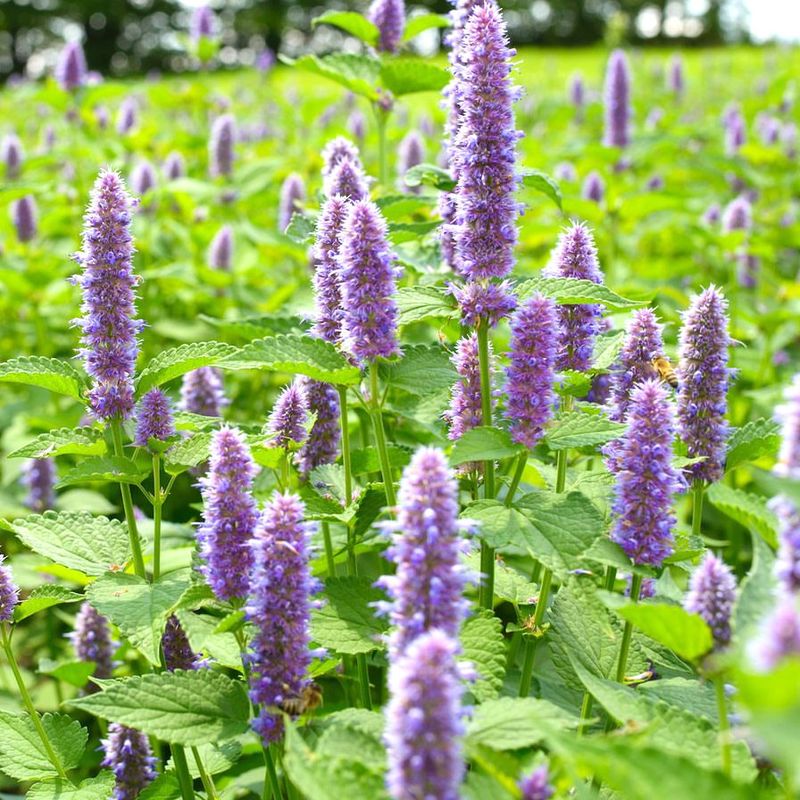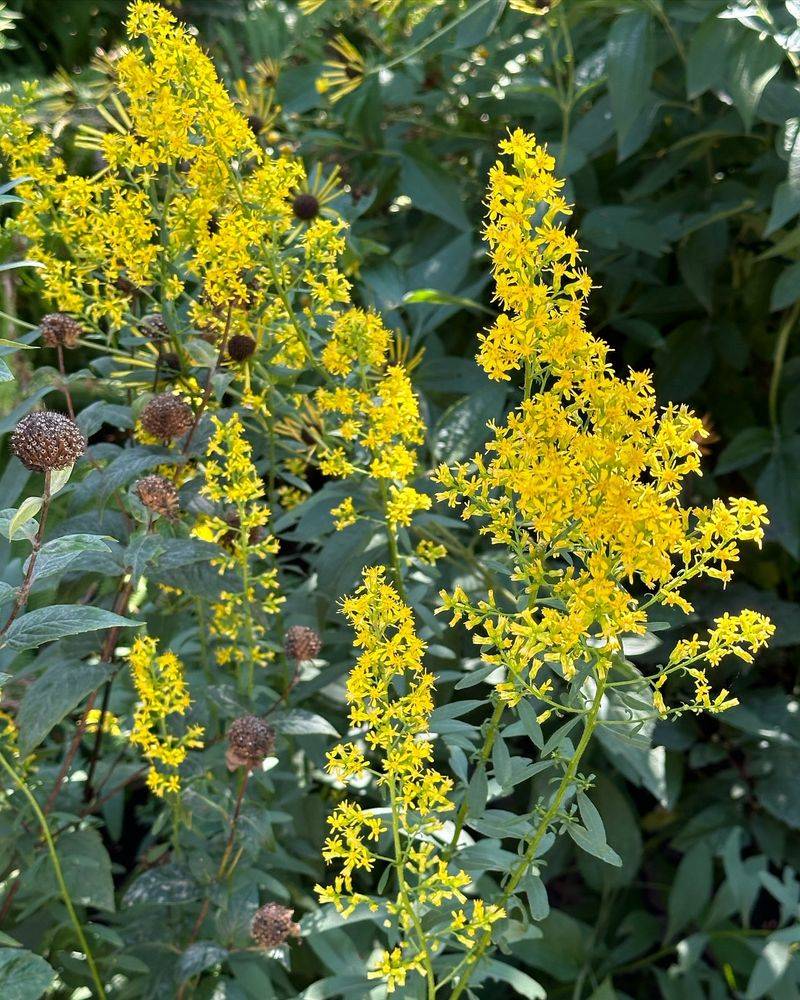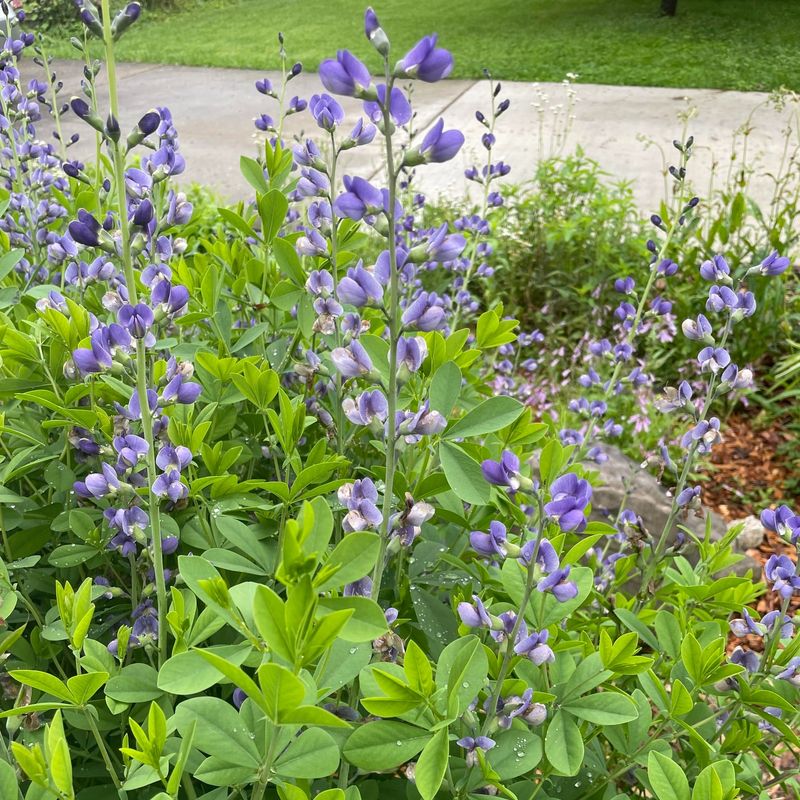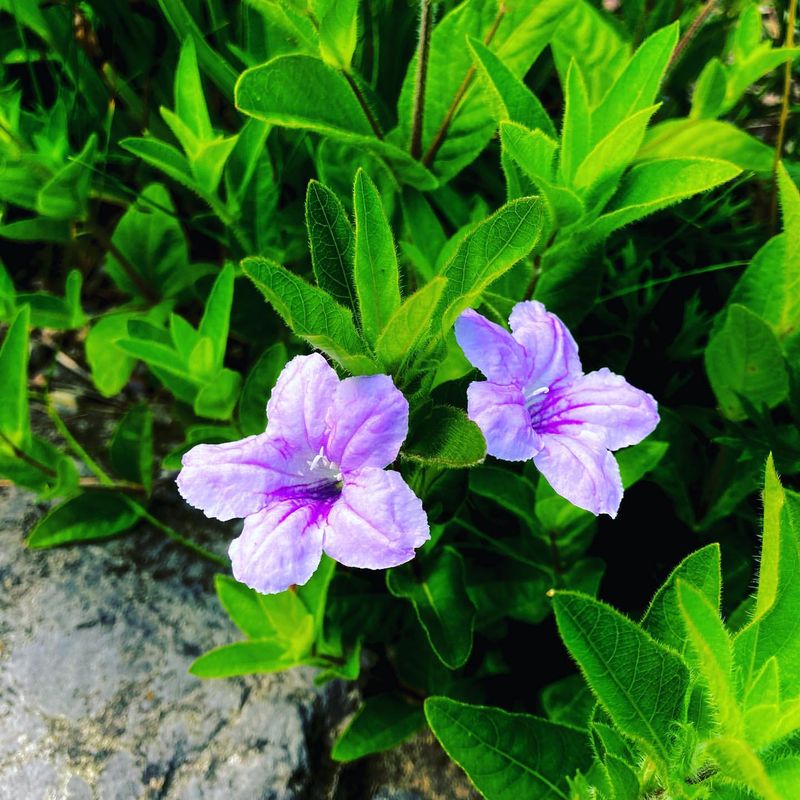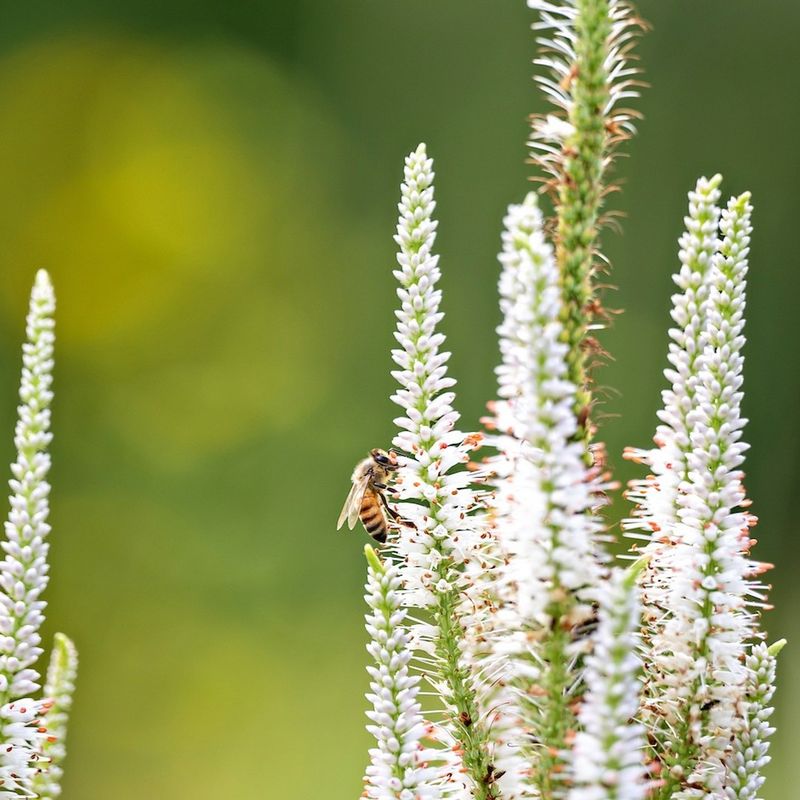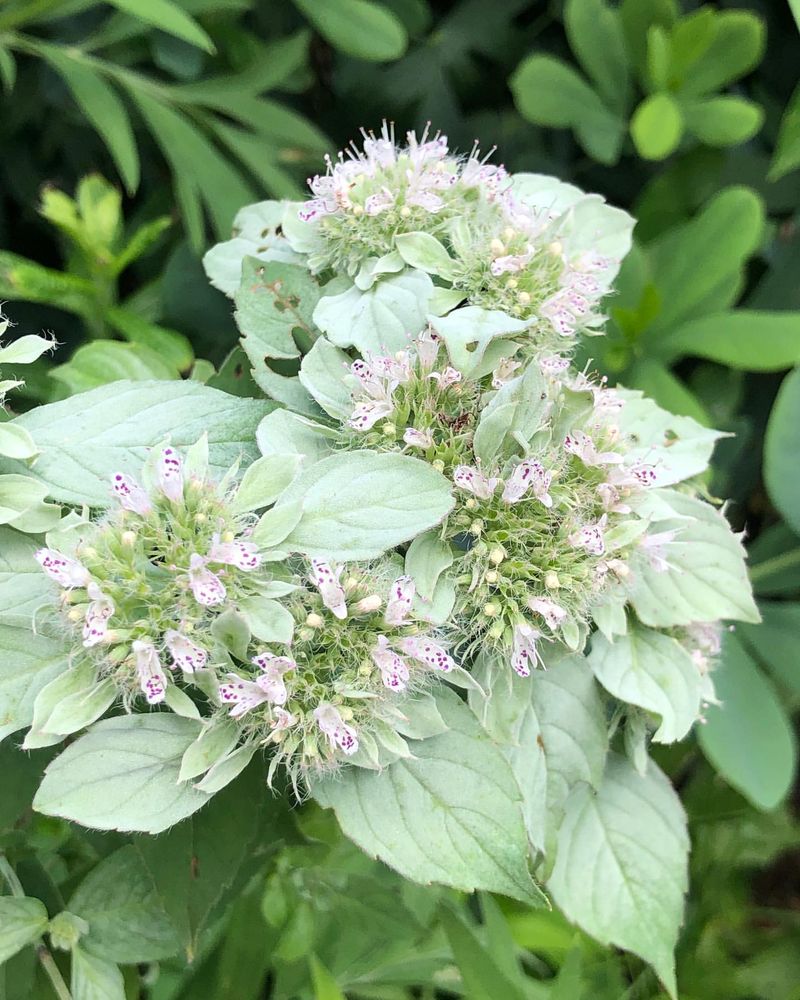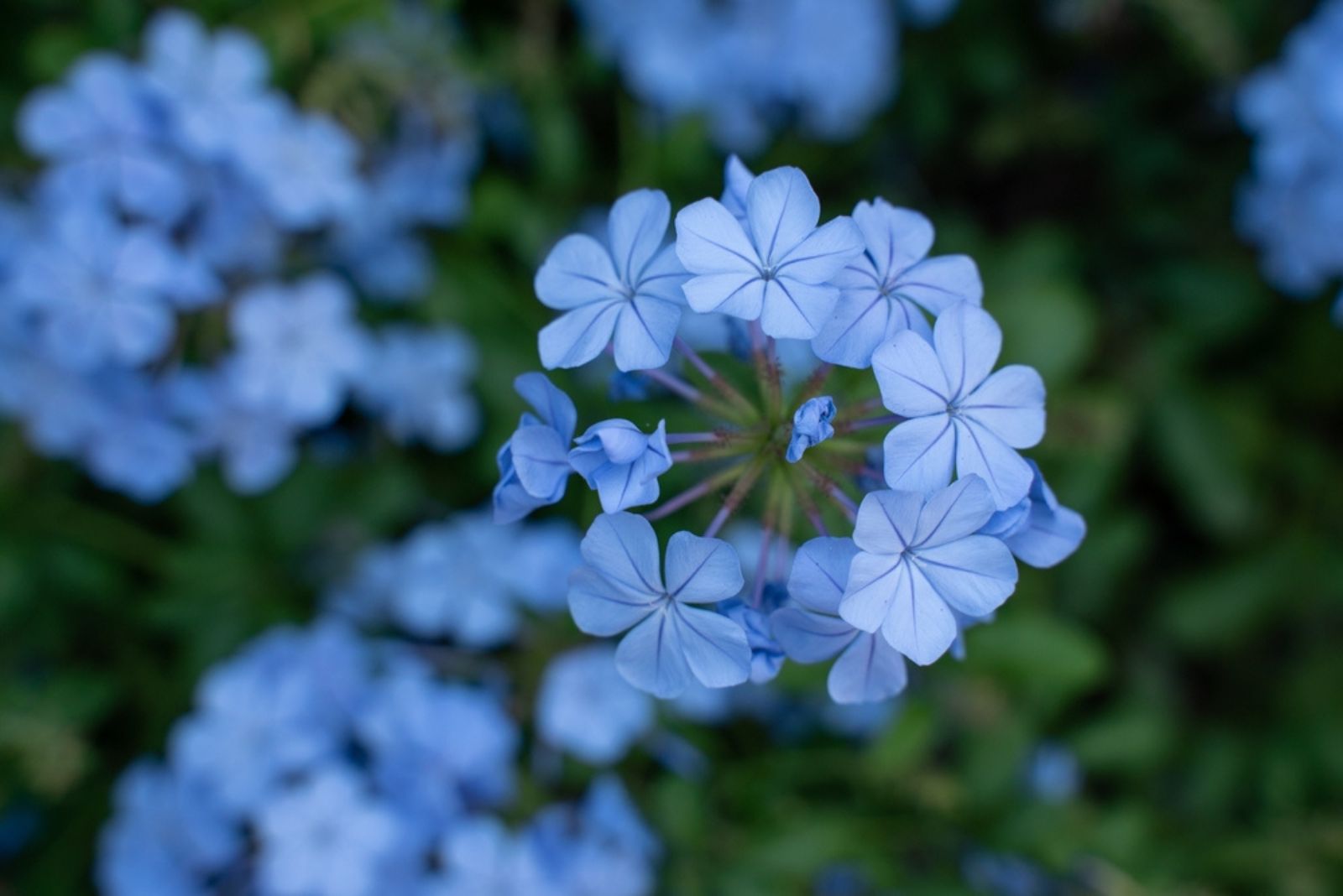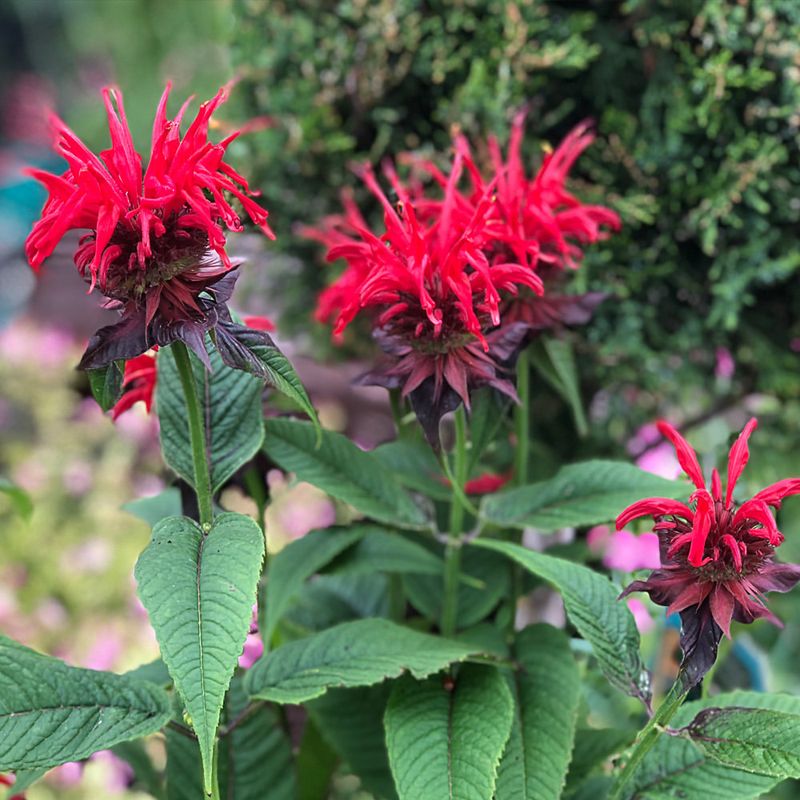Spirea, while popular, often leads to a garden takeover, leaving little room for diversity. Instead of battling this invasive species, consider cultivating native plants that bring beauty and ecological benefits to your garden.
These local stars not only offer aesthetic appeal but also support local wildlife and require less maintenance. Discover thirty captivating choices that can seamlessly fit into your garden’s narrative, offering charm and sustainability.
1. Purple Coneflower
In your garden, magic happens when vibrant colors meet ecological harmony. Enter the Purple Coneflower. Its striking purple petals encircle a spiky, copper center, making it a visual feast. This perennial is not just a delight for the eyes but also a beacon for pollinators.
Bees and butterflies frequent its blooms, enhancing the garden’s life. These flowers are hardy, requiring minimal fuss, and thrive in sunny spots.
As an added bonus, its seeds provide nourishment for birds come winter. Make it a staple in your outdoor sanctuary.
2. Black-eyed Susan
Imagine a burst of sunshine captured in petals, and you have the Black-eyed Susan. This cheerful flower boasts golden-yellow rays and a dark, commanding center. A favorite among gardeners, it brightens spaces with its sunny disposition.
Not only does it bring visual joy, but it also supports an array of pollinators, from bees to butterflies. Hardy and adaptable, it grows effortlessly in various soil types.
Its resilience ensures it comes back year after year, inviting nature’s best into your garden. Embrace its warmth and watch your garden thrive.
3. Butterfly Weed
Unleash a spectacle of orange fireworks in your garden with Butterfly Weed. Its vibrant clusters stand out, beckoning butterflies with their nectar-rich bounty. Monarchs, in particular, favor this plant, making it essential for supporting their life cycle.
Beyond its beauty, it’s a hardy native that thrives in well-drained soil and full sun. It’s low-maintenance and drought-tolerant, perfect for the eco-conscious gardener.
Including it in your garden not only adds a pop of color but also contributes to ecological balance. It’s a win-win for beauty and sustainability.
4. Joe Pye Weed
In the realm of towering elegance, Joe Pye Weed reigns supreme. Its tall stems culminate in clusters of lavender-pink blooms, creating an inviting haven for butterflies.
This native plant thrives in moist, rich soils and can add height and structure to your garden. Despite its name, it’s anything but a weed; it’s a powerhouse of pollination support.
Plant it where it can stretch towards the sun, and you’ll witness a vibrant display of color and life. It’s a must-have for those aiming to enhance their garden’s vertical appeal.
5. Wild Bergamot
Step into a meadow of tranquility with Wild Bergamot. This aromatic plant, with its pale purple flowers, creates a whimsical atmosphere.
Its fragrance attracts hummingbirds and bees, ensuring your garden buzzes with activity. As a member of the mint family, it’s resilient and grows well in diverse conditions, from full sun to partial shade.
Wild Bergamot isn’t just a feast for the senses; it’s also a low-maintenance wonder. Incorporate it into your garden for a touch of wild beauty and an endless parade of pollinators.
6. Eastern Red Columbine
Delicate elegance defines the Eastern Red Columbine. Its red and yellow blooms dangle like intricate lanterns, beckoning with a gentle nod in the breeze.
This shade-loving plant adds a splash of color to woodland gardens, thriving in shady nooks where others might falter. Hummingbirds adore its nectar-rich flowers, making it a lively addition to your garden sanctuary.
Its airy, open form provides a light, graceful presence, ensuring it complements rather than competes with its surroundings. A graceful choice for those seeking subtle beauty and wildlife support.
7. Switchgrass
Nature’s sway is captured effortlessly in Switchgrass. Its tall, graceful plumes dance in the wind, creating a serene spectacle.
This native grass is not just visually appealing but also incredibly adaptable. It thrives in a variety of soils and conditions, including drought, making it a resilient choice for sustainable gardening.
Beyond aesthetics, it provides habitat and food for wildlife, from songbirds to small mammals. Embrace Switchgrass in your landscape for its beauty, versatility, and ecological benefits.
8. Purple Prairie Clover
In the tapestry of a prairie, Purple Prairie Clover is a jewel. Its vibrant purple flowers and delicate green leaves create a striking contrast in the landscape.
As a native legume, it enriches the soil by fixing nitrogen, ensuring your garden remains fertile. It thrives in sunny, well-drained spots and is drought-tolerant, making it perfect for low-maintenance gardening.
Its blooms are a magnet for bees and butterflies, adding a lively dimension to your outdoor space. Choose Purple Prairie Clover for a touch of ecological elegance and vibrant life.
9. Wild Lupine
A cascade of blue greets you with Wild Lupine. Its tall spikes of flowers create a stunning vertical display that can transform any garden.
Beyond its beauty, Wild Lupine is vital for the life cycle of several butterfly species, particularly the endangered Karner Blue. It thrives in sandy, well-drained soils and full sun, embodying resilience and charm.
By planting Wild Lupine, you’re not only adding color but also playing a part in species conservation. It’s a plant with purpose and beauty.
10. Cardinal Flower
In the world of bold statements, the Cardinal Flower stands out with its intense red blooms. These fiery flowers are irresistible to hummingbirds, turning your garden into a haven of aerial acrobatics.
Thriving in moist conditions, it’s perfect for adding color to damp areas where other plants might struggle. Its striking appearance adds drama and flair to any landscape.
By choosing the Cardinal Flower, you’re embracing both beauty and biodiversity. It’s a captivating way to support local wildlife while enhancing your garden’s aesthetic.
11. New England Aster
Autumn’s glory is captured in the New England Aster. Its purple blooms with sunny yellow centers make it a standout in the fall garden.
This perennial loves full sun and well-drained soil, and its late blooming period provides essential nectar for pollinators preparing for winter. It’s not just a visual treat but also a lifeline for bees and butterflies.
Hardy and reliable, the New England Aster is perfect for adding late-season color and ecological support. Let it grace your garden with its vibrant hues and pollinator-friendly flowers.
12. Blue Vervain
Tall and slender, Blue Vervain makes a graceful statement in any wetland or garden. With its spikes of blue flowers, it brings a touch of elegance and tranquility.
This native perennial thrives in moist soils and full sun, making it ideal for wetland gardens or areas with consistent moisture. Its blooms attract a variety of pollinators, supporting your garden’s ecological health.
Blue Vervain is more than just a pretty face; it’s a robust plant that adds both beauty and biodiversity to your outdoor spaces. Embrace its elegance in your garden design.
13. Wild Senna
In the dance of color and form, Wild Senna takes center stage with its clusters of yellow flowers. This striking plant offers more than just visual appeal; it enriches the soil by fixing nitrogen, promoting a healthy garden ecosystem.
Thriving in sunny locations and adaptable to various soil types, it’s a robust choice for sustainable gardening. Its flowers are a magnet for pollinators, ensuring your garden is alive with activity.
Choose Wild Senna for its bright blooms and ecological benefits, creating a vibrant and sustainable garden sanctuary.
14. Virginia Bluebells
A woodland wonder, Virginia Bluebells enchant with clusters of delicate blue flowers. These ephemeral beauties usher in spring, their blooms nodding gently in the breeze.
Preferring moist, shady environments, they thrive under the canopy of trees, adding a touch of color where it’s least expected. Their early flowers provide essential nectar for emerging pollinators.
Add Virginia Bluebells to your garden for a burst of springtime magic and a boost to local biodiversity. They’re a delightful reminder of the changing seasons and a haven for early pollinators.
15. Goldenseal
In the shaded realms of the forest, Goldenseal shines brightly. Its yellow flowers and large leaves provide a lush, green backdrop that’s hard to overlook.
This native plant thrives in rich, well-drained soils and prefers a shaded environment, making it perfect for woodland gardens. Its vibrant foliage and flowers bring life to darker corners.
Goldenseal is not only beautiful but also supports local wildlife, offering food and habitat. It’s a fantastic choice for enhancing biodiversity while adding lush greenery to your garden.
16. Prairie Blazing Star
In the prairie landscape, the Prairie Blazing Star is a spectacle of vertical beauty. Its tall spikes of purple flowers create a striking silhouette against the sky.
This native perennial thrives in full sun and well-drained soils, withstanding drought conditions with ease. Its blooms are a favorite among pollinators, drawing butterflies and bees to your garden.
By incorporating Prairie Blazing Star, you’re adding a dynamic element to your garden, enhancing both its visual appeal and ecological value. It’s a must-have for those seeking a blend of beauty and resilience.
17. American Beautyberry
The American Beautyberry brings a touch of whimsy with its clusters of vibrant purple berries. This native shrub is a visual delight, with its colorful fruit contrasting against lush green foliage.
Thriving in a variety of soil types and both sun and shade, it’s adaptable and easy to grow. Its berries are not only decorative but also serve as an important food source for birds.
Incorporate American Beautyberry into your garden for a splash of color and a boost to local wildlife. It’s a charming addition with both aesthetic and ecological benefits.
18. Common Milkweed
Common Milkweed is both a beauty and a biologist’s dream. Its large, fragrant pink flower clusters are a magnet for a myriad of pollinators, especially butterflies.
Thriving in sunny, well-drained conditions, it’s essential for the lifecycle of Monarch butterflies, providing critical habitat and food. This perennial is resilient, withstanding various environmental stresses.
By planting Common Milkweed, you’re inviting a kaleidoscope of life into your garden, supporting biodiversity and conservation efforts. It’s a plant with purpose and panache, perfect for the conscientious gardener.
19. Wild Strawberry
Sweetness envelopes your garden with Wild Strawberry. Its small white flowers give way to juicy red berries, offering a delightful treat for both the eyes and the palate.
This groundcover thrives in sunny spots and well-drained soil, creating a lush carpet of greenery. Its berries are not only tasty but also attract wildlife, from birds to small mammals.
By incorporating Wild Strawberry, you’re not just enhancing your garden’s aesthetic but also creating a functional habitat. It’s a perfect blend of beauty, bounty, and biodiversity.
20. Blue Wild Indigo
In the world of elegance and endurance, Blue Wild Indigo makes its mark. Its tall, branching stems adorned with blue flowers create a stunning garden focal point.
This native perennial is adaptable, thriving in various soil types and full sun. Its blooms attract an array of pollinators, supporting your garden’s health and vitality.
Beyond its visual appeal, it adds structure and form to your landscape, making it a versatile choice for garden design. Embrace Blue Wild Indigo for its beauty, resilience, and ecological benefits.
21. New Jersey Tea
New Jersey Tea is a delight to behold with its delicate white flower clusters and rich green foliage. This compact shrub brings a touch of elegance and charm to any garden.
Thriving in sunny, well-drained locations, it’s perfect for those looking to add low-maintenance beauty. Its flowers are a beacon for pollinators, ensuring your garden is abuzz with activity.
Beyond its aesthetic allure, New Jersey Tea enriches the soil and provides habitat for local wildlife. It’s an excellent choice for enhancing garden biodiversity and beauty effortlessly.
22. Purple Giant Hyssop
In a meadow of wonders, Purple Giant Hyssop stands tall with spikes of purple flowers. This striking plant adds height and drama to any garden setting.
Its blooms are a favorite among bees and butterflies, ensuring your garden buzzes with life. Thriving in sunny, well-drained conditions, it’s both beautiful and resilient.
The Purple Giant Hyssop is not just a visual treat; it’s a cornerstone for pollinator support. Incorporate it into your garden for a dynamic blend of color, structure, and ecological value.
23. Showy Goldenrod
Golden splendor unfolds with Showy Goldenrod. Its tall, vibrant yellow flower clusters light up any garden, adding a touch of autumn brilliance.
This native perennial thrives in sunny locations and well-drained soil, making it a hardy choice for sustainable gardening. Its late-season blooms provide crucial nectar for pollinators preparing for winter.
Showy Goldenrod is more than just a pretty face; it’s a vital part of the garden ecosystem. By choosing it, you’re enhancing both the visual appeal and environmental value of your outdoor space.
24. Indigo Bush
At the forest’s edge, the Indigo Bush captivates with clusters of delicate purple flowers. This native shrub adds a touch of mystery and allure to any landscape.
Thriving in sun-dappled locations, it’s both adaptable and resilient, growing well in various soil types. Its blooms offer valuable resources for pollinators, enhancing your garden’s ecological health.
Beyond its charm, the Indigo Bush provides habitat and support for local wildlife. It’s a wonderful choice for those seeking to blend beauty with biodiversity in their garden design.
25. Wild Petunia
In a sunny garden bed, the Wild Petunia blooms with pale violet flowers, bringing a soft touch of color and elegance.
This native perennial thrives in full sun and well-drained soil, making it a simple yet stunning addition to your garden. Its flowers attract butterflies, ensuring your outdoor space is alive with movement.
Easy to grow and maintain, Wild Petunia is perfect for those seeking low-maintenance beauty. By incorporating it, you’re enriching your garden’s aesthetic and supporting local pollinator populations.
26. Culver’s Root
In a wetland garden, Culver’s Root stands with dignity and grace, its tall spikes of white flowers creating a serene spectacle.
This native perennial thrives in moist conditions and full sun, making it ideal for wetland or rain gardens. Its blooms are a vital resource for pollinators, ensuring your garden supports local ecosystems.
By choosing Culver’s Root, you’re adding both beauty and biodiversity to your outdoor spaces. It’s a plant that combines elegance with ecological responsibility, perfect for the conscientious gardener.
27. Mountain Mint
Aromatic and alluring, Mountain Mint brings a refreshing charm with its clusters of white flowers. This native plant creates a sensory delight in any garden.
Thriving in sunny locations, it’s easy to grow and maintain, spreading its invigorating fragrance. Its flowers are a favorite among bees, ensuring your garden is a hub of activity.
Beyond its scent, Mountain Mint supports biodiversity and adds a touch of elegance to your garden design. Incorporate it for a blend of olfactory pleasure and ecological enrichment.
28. Wild Blue Phlox
In the soft dappled light of a woodland garden, Wild Blue Phlox enchants with clusters of blue flowers. This native beauty adds a gentle elegance to shaded areas.
Preferring moist, well-drained soils, it’s perfect for woodland gardens where it can thrive under the canopy. Its blooms provide early nectar for pollinators, enhancing your garden’s ecological balance.
Wild Blue Phlox is not only a visual treat but also a vital part of supporting local wildlife. It’s a choice that brings both beauty and biodiversity to your outdoor sanctuary.
29. Bee Balm
Vibrant and vivacious, Bee Balm transforms any garden with its red flowers. This native perennial is a pollinator powerhouse, drawing bees and hummingbirds with its rich nectar.
Thriving in sunny, well-drained conditions, it’s easy to grow and maintain, making it a favorite among gardeners. Its blooms add bold color and a lively atmosphere.
By including Bee Balm, you’re enhancing your garden’s ecological value while adding a splash of color. It’s a plant that delights both the eyes and the local wildlife.

